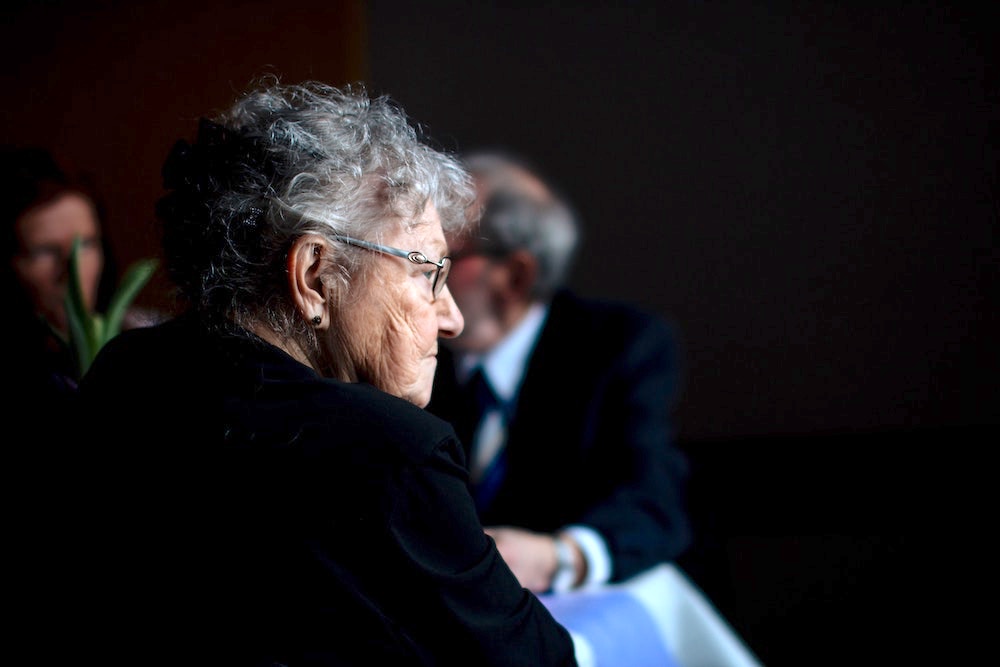A medically vulnerable population, underpaid caregivers who often work at multiple facilities, shortages of testing and caregiver protections and significant gaps in data reporting are combining to make senior care facilities the newest major front in the battle against the coronavirus, a panel of professionals said Tuesday.
All in an environment where social distancing isn’t really an option, except between the elderly residents and their family members.
“Nursing homes really have to be the priority for the state going forward,” said Craig Cornett, CEO and president of the California Association of Health Facilities. He was one of five panelists in the latest in a series of “coronavirus telephone town hall” news conferences moderated by state Sen. Steve Glazer, D-Orinda, whose district includes much of Alameda and Contra Costa Counties.
So far, one in every five coronavirus deaths in the U.S. has happened in a long-term senior care facility.
Sometimes they come in bunches at such places; at least 13 residents of Gateway Care and Rehabilitation Center in Hayward have died, along with four residents of the Orinda Care Center. At the Carlton Senior Living center in Pleasant Hill, 57 people have tested positive for COVID-19.
With the passage of time and with more widespread coronavirus testing, the number of positive tests among senior care facilities – including nursing homes and assisted-living centers – is expected to skyrocket.
While Tuesday’s panelists said the seriousness of COVID-19 is unprecedented in their experience, there still are measures available to blunt the virus’s effects. One is to provide more “personal protective equipment” (PPE), like masks, gloves, face shields and disposable booties, to senior care providers. Anita Chabria, a Sacramento-based reporter who covers health issues, said there wasn’t a significant demand for PPE until COVID-19 hit. And now that it is needed, she said, it isn’t always available in sufficient quantities.
Since COVID-19 does its worst damage to people who are elderly and/or have significant underlying medical issues, senior care centers would figure to be a hotbed for the virus even with no other contributing factors.
But there are other factors, including the nature of most of the people who are the front-line caregivers for most of these congregate-living facilities. Michael Dark, an attorney with the California Advocates for Nursing Home Reform, a San Francisco-based nonprofit that advocates for people in long-term care, said these caregivers typically are women, often of color, and earn minimum wage or slightly more. So many of them work more than one job at more than one facility.
So it’s believed caregivers have played a major role in spreading the virus.
Almost 40 percent of coronavirus-positive diagnoses in senior care centers have been staff, as opposed to residents. “This, I think, has been an accelerant in this problem,” Dark said Tuesday. The ultimate answer, he said, is to significantly boost caregivers’ pay, perhaps double it, so they can work at one facility and not need a second job.
“What they need is money,” Dark said. “If you’re making $12 an hour, and you get a 20 percent pay raise, you’re still not making that much.”
And just as with society in general, having more data available about who has been tested and who is sick will be key in stemming the virus’s spread in senior care facilities. There’s a major gap in that data, said Nicole Howell, executive director for Ombudsman Services of Contra Costa, Solano and Alameda counties, in that care facilities with six or fewer resident beds have fewer reporting demands than do larger facilities. “And I think that’s deeply troubling,” Howell said Tuesday. It has taken several weeks, she said, for public agencies and regulators to figure out who should take the lead on testing and making sure PPE supplies are sufficient. And such senior care businesses, she said, shouldn’t be immune from “appropriate enforcement of the rules.”
Cornett said he’s heard of a number of people wanting to take family members home from congregate care homes in light of the COVID-19 pandemic. That isn’t necessarily a safer option. “These patients could be just as exposed (to COVID-19) if they were living at home,” he said.
